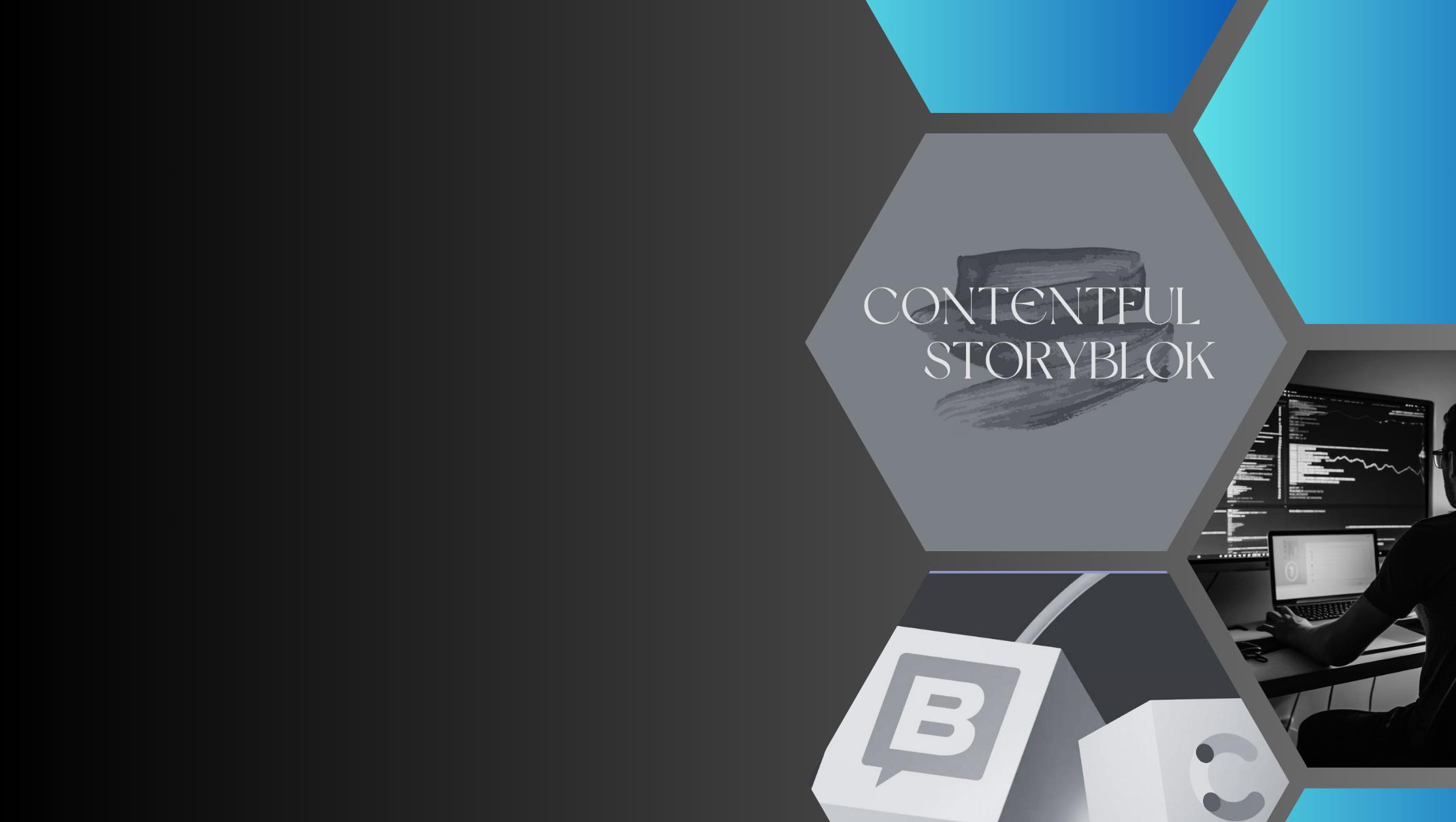
Contentful vs Storyblok: Choosing the Right CMS for Your Needs
by Irina KedyarovaSeptember 20th, 2023
Summary
What is Contentful?
What is Storyblok?
What are Storyblok and Contentful used for?
Key features of Contentful and Storyblok
What are the main differences between Contentful and Storyblok?
Pros and Cons of using Storyblok and Contentful
FAQs
Scroll to read all the article.
What is Contentful?
Contentful is a versatile and modern content management system (CMS) that empowers businesses to create, manage, and deliver digital content across various platforms and channels. Unlike traditional CMSs, Contentful adopts a "headless" architecture, which means it separates content creation and storage from its presentation. This headless approach allows users to structure and store content in a flexible manner, making it easy to publish content to websites, mobile apps, IoT devices, and more.
Contentful offers a user-friendly web-based interface for content creators to input and organize text, images, videos, and other media types. This content can be structured using customizable content models, ensuring consistency and ease of management.
In summary, Contentful is a cutting-edge CMS that provides flexibility, scalability, and the ability to deliver content to diverse platforms, making it a valuable tool for businesses seeking to maintain a strong online presence and engage their audiences effectively.
What is Storyblok?
Storyblok is a user-friendly and visually-oriented content management system (CMS) that simplifies content creation and management. It is known for its intuitive visual editor, making it accessible to content creators without technical expertise. Storyblok's unique component-based approach allows for the easy assembly of dynamic web pages and layouts, enhancing content development speed and consistency.
This CMS supports multi-language content management, making it suitable for global audiences, and offers version control for efficient collaboration and content tracking. Storyblok's flexible pricing, including a free plan for basic use, makes it an attractive option for businesses of all sizes, including startups. Overall, Storyblok is a modern CMS that prioritizes ease of use and collaboration, making it a valuable tool for content-driven projects.
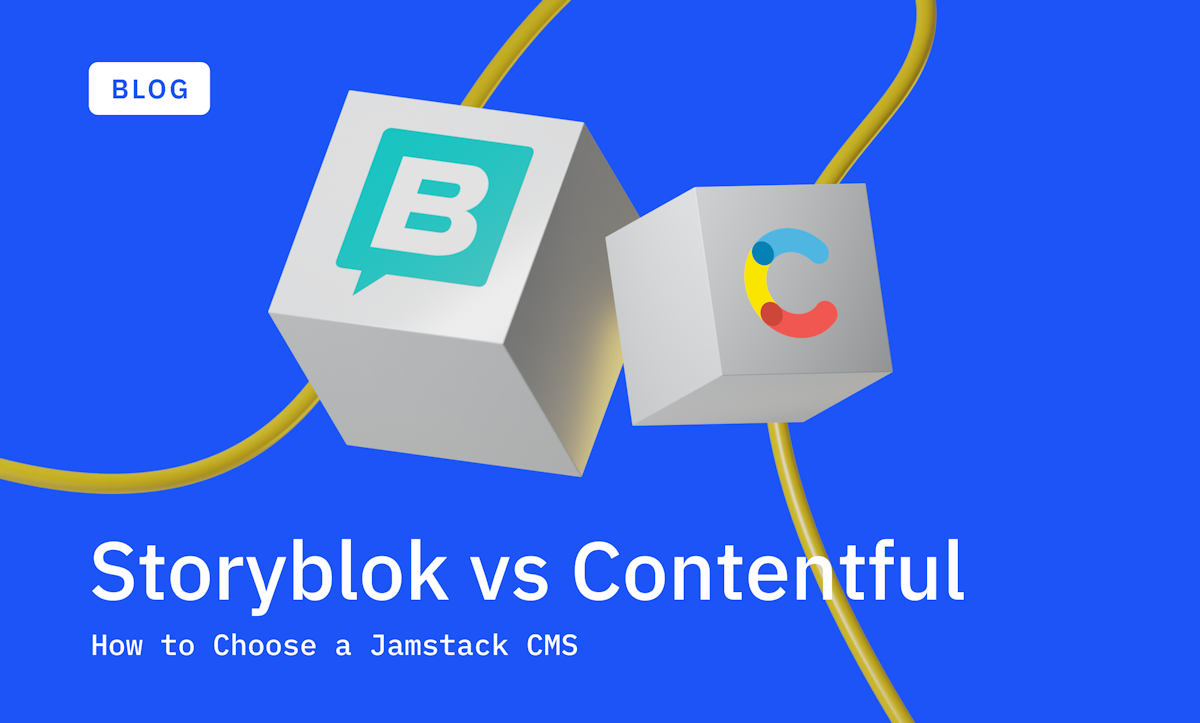
What are Storyblok and Contentful used for?
Storyblok and Contentful are both used for creating, managing, and delivering digital content across various online platforms and channels. Here's an overview of what each of these CMS platforms is commonly used for.
Contentful is used for:
1) Website Content Management:
Contentful allows businesses to manage the content of their websites efficiently, making it easy to update text, images, videos, and other media types.
2) Mobile App Content:
It's commonly used to store and deliver content to mobile applications, ensuring consistency and timely updates across different devices.
3) IoT Devices:
Contentful can be utilized to manage and distribute content to Internet of Things (IoT) devices, providing real-time data and information to connected devices.
4) Multi-Platform Content Delivery:
Contentful's headless architecture enables content to be delivered to various platforms, such as websites, mobile apps, smart devices, and more.
5) Global Content Delivery:
Its support for multi-language content management makes it suitable for businesses with a global audience.
Storyblok is used for:
1) Content Creation with a Visual Editor:
Storyblok's visual editor is ideal for content creators who prefer a user-friendly interface for composing and editing content.
2) Component-Based Content:
It excels at managing content as reusable components, which is particularly useful for assembling dynamic web pages and layouts.
3) Multi-Language Content:
Similar to Contentful, Storyblok supports content management in multiple languages, catering to international projects.
4) Versioning and Collaboration:
Storyblok provides version control for content and collaboration tools, making it suitable for teams working together on content projects.
5) Flexible Content Management:
Its flexible pricing, including a free plan, makes it an attractive choice for businesses of various sizes and budgets.
In essence, both Contentful and Storyblok are powerful content management systems used to streamline content creation, organization, and delivery, but they have distinct features and advantages that cater to different preferences and project requirements. Contentful is known for its flexibility and headless architecture, while Storyblok focuses on simplicity and user-friendliness with its visual editor and component-based approach.
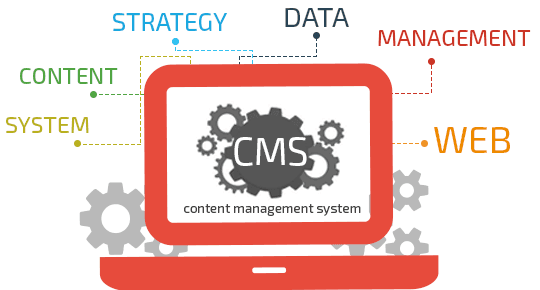
Key features of Contentful and Storyblok
Contentful and Storyblok have some key features that are presented below.
Key features of Contentful:
1) Headless Architecture:
Contentful's headless CMS approach separates content creation and presentation, giving developers the freedom to use any front-end technology. This flexibility is ideal for creating unique and customized user experiences.
2) Content Modeling:
Contentful offers a robust content modeling system that allows users to structure and organize content with ease. This ensures content consistency and adaptability.
3) Multi-Language Support:
Contentful supports content management in multiple languages, making it suitable for businesses with a global audience.
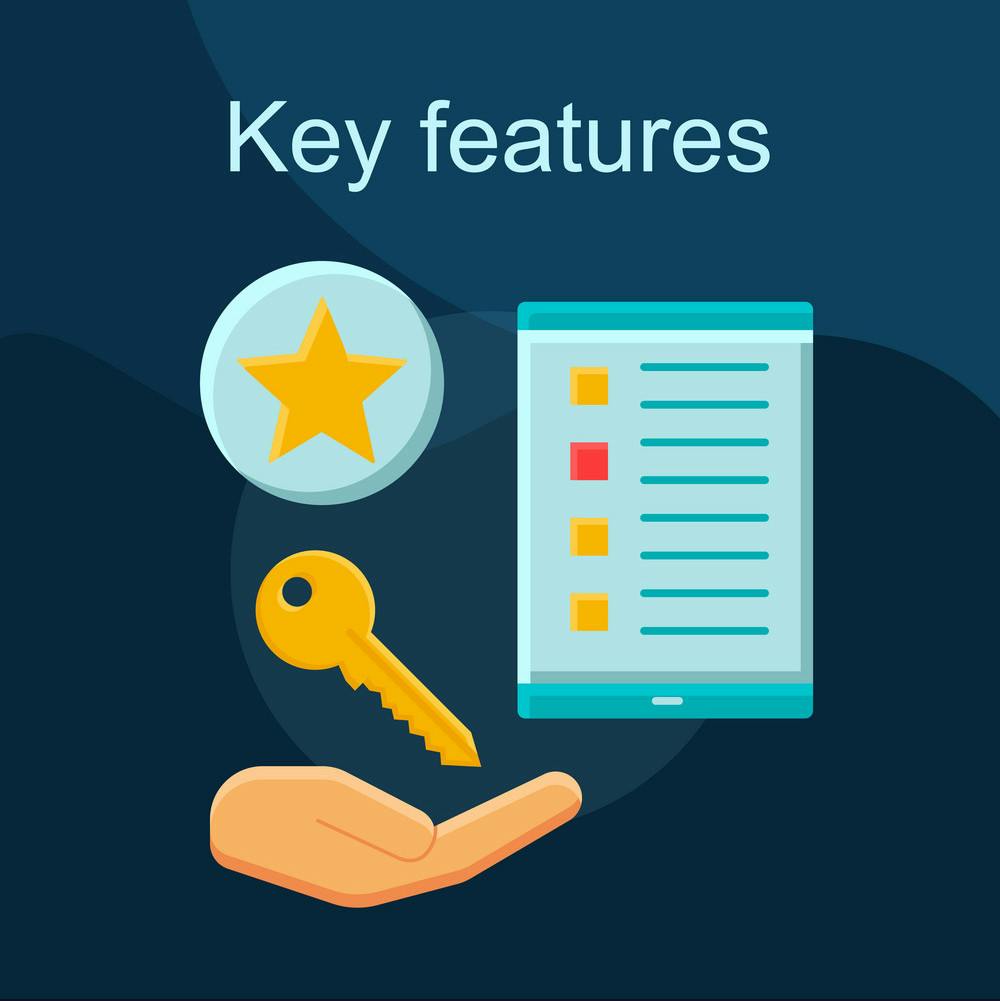
4) Developer-Friendly:
Contentful provides a wide range of APIs and SDKs, making it a preferred choice among developers who want to build custom integrations and applications.
5) Versioning and Collaboration:
Contentful offers collaboration features and version control, facilitating teamwork and maintaining a history of content changes.
6) Performance and Scalability:
Its headless architecture ensures excellent performance and scalability, making it suitable for large and complex content-driven applications.
7) Security:
Contentful prioritizes security, offering features like role-based access control and data encryption to protect content and data.
Key features of Storyblok:
1) Visual Editor:
Storyblok is known for its user-friendly visual editor, which simplifies content creation and editing. This feature is especially helpful for non-technical users.
2) Component-Based Approach:
Storyblok embraces a component-based content management system, making it easy to create dynamic content by reusing components.
3) Multi-Language Support:
Similar to Contentful, Storyblok supports content management in multiple languages, making it suitable for international projects.
4) Versioning and Collaboration:
Storyblok provides version control for content and offers collaboration features, making it suitable for teams working on content projects.
5) Flexible Pricing:
Storyblok offers a flexible pricing structure, including a free plan, which is appealing for businesses of different sizes and budgets.
6) User-Friendly:
Its focus on simplicity and an intuitive interface makes it accessible to content creators with varying levels of technical expertise.
7) Content Delivery:
Storyblok is designed to efficiently deliver content to websites, apps, and other digital platforms, ensuring a seamless user experience.
In summary, Contentful is known for its flexibility, extensive developer tools, and headless architecture, while Storyblok is recognized for its user-friendliness, visual editor, and component-based approach to content management. The choice between these two CMS platforms depends on your specific project needs and team preferences.
What are the main differences between Contentful and Storyblok?
Contentful and Storyblok are both content management systems (CMS), but they have distinct differences that cater to different use cases and user preferences. Here are the main differences between Contentful and Storyblok:
1. Content Modeling and Flexibility:
Contentful: Contentful is highly flexible and offers robust content modeling capabilities. It separates content from presentation (headless) and allows for extensive customization, making it suitable for complex and customized digital experiences.
Storyblok: Storyblok's strength lies in its simplicity and ease of use. It uses a component-based approach, which is intuitive for content creators and marketers. However, it may have some limitations for highly customized projects.
2. User-Friendliness:
Contentful: Contentful can have a steeper learning curve, especially for non-technical users, due to its extensive customization options and developer-focused features.
Storyblok: Storyblok is designed with a focus on user-friendliness, offering a visual editor that simplifies content creation. This makes it accessible to users with varying technical expertise.
3. Developer-Centric vs. Marketer-Friendly:
Contentful: Contentful is favored by developers who want complete control over the front-end presentation and the flexibility to work with various programming languages and frameworks.
Storyblok: Storyblok caters to marketers and content creators who need an easy-to-use, visual interface to manage content without extensive developer involvement.
4. Pricing Model:
Contentful: Contentful's pricing is based on usage and features, with a free plan for smaller projects. However, it can become more expensive as usage scales up.
Storyblok: Storyblok offers a flexible pricing structure, including a free plan for basic use. This can make it a cost-effective choice, especially for startups and small businesses.
5. Content Delivery Approach:
Contentful: Contentful's headless architecture allows for content delivery to various platforms and devices, making it suitable for complex, multi-channel projects.
Storyblok: Storyblok focuses on efficiently delivering content to websites and web applications, which is well-suited for content-driven websites and blogs.
6. Component-Based Content Management:
Contentful: While Contentful supports content structuring, it doesn't emphasize a specific component-based approach as strongly as Storyblok.
Storyblok: Storyblok excels in component-based content management, allowing users to create dynamic pages by reusing components.
7. Collaboration and Workflow:
Contentful: Contentful offers collaboration features and version control, but its workflow may require a more structured approach.
Storyblok: Storyblok also provides version control and collaboration tools, making it suitable for teams working closely on content projects.
In summary, Contentful is known for its flexibility, developer-centric approach, and suitability for complex projects, while Storyblok is valued for its user-friendliness, visual editor, and component-based content management, making it a great choice for simpler projects and teams with diverse skill sets. The choice between the two depends on your specific project requirements and the needs of your team.
Pros and Cons of using Storyblok and Contentful
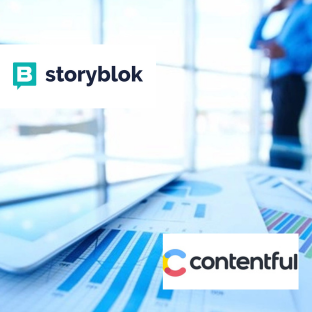
Certainly, here are the pros and cons of using Storyblok and Contentful.
Pros of using Contentful:
1. Flexibility:
Contentful's headless architecture provides unmatched flexibility, allowing developers to use any front-end technology, resulting in highly customizable digital experiences.
2. Content Modeling:
It offers robust content modeling capabilities, enabling users to structure and organize content with precision and adaptability.
3. Multi-Language Support:
Contentful supports content management in multiple languages, making it suitable for businesses targeting a global audience.
4. Developer-Friendly:
It provides extensive APIs and SDKs, making it a favorite among developers who want to create custom integrations and applications.
5. Performance and Scalability:
Contentful's headless architecture ensures excellent performance and scalability, making it ideal for large and complex content-driven applications.
Cons of using Contentful:
1. Learning Curve:
Contentful can have a steeper learning curve, particularly for non-technical users, due to its extensive customization options.
2. Cost:
While it offers a free plan for smaller projects, Contentful's pricing can become expensive as usage scales up, making it less budget-friendly for some businesses.
Pros of using Storyblok:
1. User-Friendly:
Storyblok's visual editor and intuitive interface make it exceptionally user-friendly, appealing to content creators and marketers with varying technical skills.
2. Component-Based Content:
It excels in component-based content management, allowing for the easy creation of dynamic web pages by reusing components.
3. Multi-Language Support:
Similar to Contentful, Storyblok supports content management in multiple languages, making it suitable for international projects.
4. Flexible Pricing:
Storyblok offers a flexible pricing structure, including a free plan, which can be cost-effective for startups and small businesses.
5. Collaboration and Workflow:
It provides version control and collaboration tools, making it suitable for teams working closely on content projects.
Cons of using Storyblok:
1. Limited Flexibility:
Storyblok may have limitations in terms of flexibility for highly customized and complex projects, as it emphasizes simplicity.
2. Development Customization:
While it is user-friendly, Storyblok may require more developer involvement for highly customized features and integrations.
In summary, Contentful offers unparalleled flexibility and customization but may have a steeper learning curve and cost implications. Storyblok, on the other hand, prioritizes user-friendliness and simplicity, making it an excellent choice for smaller projects and teams with diverse skill sets. The choice between the two depends on your specific project requirements and your team's technical expertise.
Best Frequently Asked Questions (FAQs)
In the Contentful vs. Storyblok showdown, your choice ultimately depends on your specific needs. If you prioritize flexibility and have a team of skilled developers, Contentful could be the right choice. On the other hand, if you seek an intuitive interface and ease of use, Storyblok may be the CMS for you.
To make an informed decision, consider your project's size, complexity, and the skillset of your team. Both Contentful and Storyblok have their strengths, and choosing the right one will ensure a smooth content management experience.
Comments
Contentful and Storyblok have been a game-changer for our organization. Their headless architecture give us the freedom to deliver content to multiple platforms effortlessly. We can structure our content exactly as we want, which is crucial for our diverse projects. The developer-friendly approach is a big plus, as it allows us to create custom solutions seamlessly. While it took some time to get used to, the results have been well worth the learning curve. Highly recommended for businesses seeking flexibility and scalability.
Edward
Leave your comment
Your feedback is very important to us. Share your thoughts on what you read, or tell your own story.
Rating
Readers also enjoyed

In today's digital age, e-commerce has revolutionized the way businesses operate and consumers shop. One significant development in the e-commerce landscape is the emergence of multivendor marketplaces. These platforms have gained immense popularity due to their ability to connect sellers with a vast pool of customers and provide a seamless shopping experience. This article delves into the concept of multivendor marketplaces, exploring their benefits, challenges, and their impact on the e-commerce ecosystem.
July 17th, 2023

In the ever-evolving world of web development and technology, the Jamstack has emerged as a powerful approach for building fast, secure, and scalable websites. As businesses strive to provide seamless user experiences and leverage the latest advancements in web development, the need for Jamstack agencies has become increasingly important. In this article, we will explore the concept of a Jamstack agency, its benefits, and why it can be a game-changer for your web development projects.
July 14th, 2023

In the fast-paced world of web development, staying ahead of the curve is essential. One approach that has gained significant attention is Jamstack CMS. This article aims to unravel the concept of Jamstack CMS, its advantages, implementation best practices, and more. Whether you're a seasoned developer or a content creator looking to enhance your website's performance, join us as we dive into the fascinating realm of Jamstack CMS. By the end of this article, you'll have a solid understanding of how Jamstack CMS can revolutionize your web development workflow. So, let's embark on this journey and unlock the potential of Jamstack CMS together!
July 13th, 2023
Contact Us
Our email is manager@alt-team.com
Please, do not hesitate to contact us via e-mail or use the form below if you need a quote for your E-commerce project or have any questions about our products or services. We will be glad to answer you in a short time.